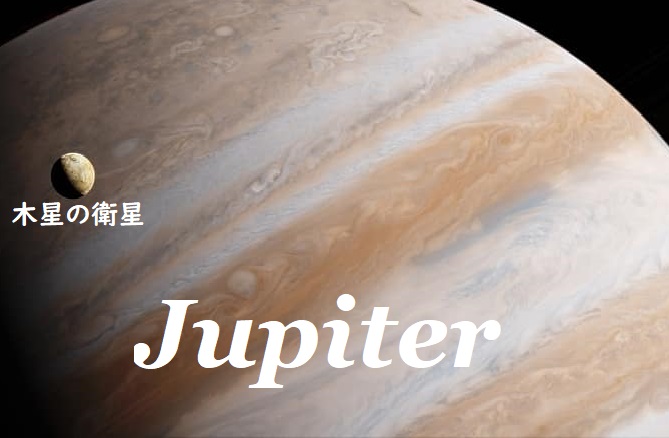
落下する物体についての実験は,衒学者たち(学者ぶる人たち)をいらだたせたであろうが,異端審問所によって咎められることはなかった。ガリレオをより危険な状態へと導いたのは望遠鏡であった。某オランダ人がそのよぅな器械(器具)を発明したと聞き,ガリレオは(も)それを再発明し、それ(再発明)とほとんど同時に,多くの天文学上の新事実を発見した。その中でも,彼にとって最も重要だったのは木星に(複数の)衛星があるということであった。それらの衛星(木星が衛星を持っているということ)は,コペルニクスの理論による太陽系の細密な複製(a miniature copy)として重要である一方、プトレマイオスの体系にあわせることは困難なものであった。さらに,それまでは,恒星(the fiexd stars)の他に(apart from とは別に)ちょうど7つの天体(太陽,月そして5つの惑星)が存在するはずであるという様々の理屈(reason)が存在しており,さらなる四つの天体の発見は人々をとても動揺させるものであった。(注:木星の衛星のうち4つはかなり大きく,ガリレオの低倍率の望遠鏡でも見ることができた。なお,つい最近、木星に新たに12個の衛星が発見されている。https://digital.asahi.com/articles/ASL7M2F8PL7MUHBI008.html) (ヨハネの)黙示録の金の燭台は7つではなかったか?(7つだったはず) そしてアジアの教会も7つでなかったか(7つだったはずだ)(注:この場合の「アジア」とはローマ時代のアジアであって、現代で言うところの小アジア即ちトルコのアナトリア半島を指す)。アリストテレス主義者(たち)は,望遠鏡を覗くことを完全に拒否し,木星の月(衛星)は錯覚であると頑固に主張した。(例えば,クラビウス神父は,「木星の衛星を見るためには、それら(衛星)を創造するような器具(道具)を作らなければならない」と言った。出典:ホワイト「料学と神学との闘争」第1巻,132p.) しかし、ガリレオは、分別をもって(prudently 用心深く)トスカニー大公(トスカーナ大公)(注:メディチ家(トスカーナ大公家)の君主)に倣って、それらの衛星を,洗礼式を行って「メディチ家の星」と命名した(ガリレオは当時,ピサ大学教授の傍ら,トスカーナ大公付哲学者に任命されていた)。このことは、木星の衛星の実在を政府に納得させるのに力があった。(注:このあたりの津田訳は次のようにいい加減。「しかし,ガリレオは,トスカナ大公に★従い★,用心深くそれらを「メディチ星」となづけた。そして,★公★はそれらの実在を政府に納得させるために★尽力した★。」)それらの衛星がたとえコペルニクスの体系のための(支持する)論拠を与えなかったとしても、それらの存在を否定した人々は、自分たちの根拠を長く主張し続けることは出来なかったであろう(IF = Even if)。
Chapter 2: The Copernican Revolution, n.11
Experiments on falling bodies, though they might vex pedants, could not be condemned by the Inquisition. It was the telescope that led Galileo on to more dangerous ground. Hearing that a Dutchman had invented such an instrument, Galileo reinvented it, and almost immediately discovered many new astronomical facts, the most important of which, for him, was the existence of Jupiter’s satellites. They were important as a miniature copy of the solar system according to the theory of Copernicus, while they were difficult to fit into the Ptolemaic scheme. Moreover, there had been all kinds of reasons why, apart from the fixed stars, there should be just seven heavenly bodies (the sun, the moon, and the five planets), and the discovery of four more was most upsetting. Were there not the seven golden candlesticks of the Apocalypse, and the seven churches of Asia – Aristotelians refused altogether to look through the telescope, and stubbornly maintained that Jupiter’s moons were an illusion, (Note: Father Clavius, for example, said that “to see the satellites of Jupiter, men had to make an instrument which would create them.” White, Warfare of Science with Theology, I, p. 132) But Galileo prudently christened them “Sidera Medicea” (Medicean stars) after the Grand Duke of Tuscany, and this did much to persuade the Government of their reality. If they had not afforded an argument for the Copernican System, those who denied their existence could not have long maintained their ground.
出典:Religion and Science, 1935, chapt. 2.
情報源:https://russell-j.com/beginner/RS1935_02-110.HTM
